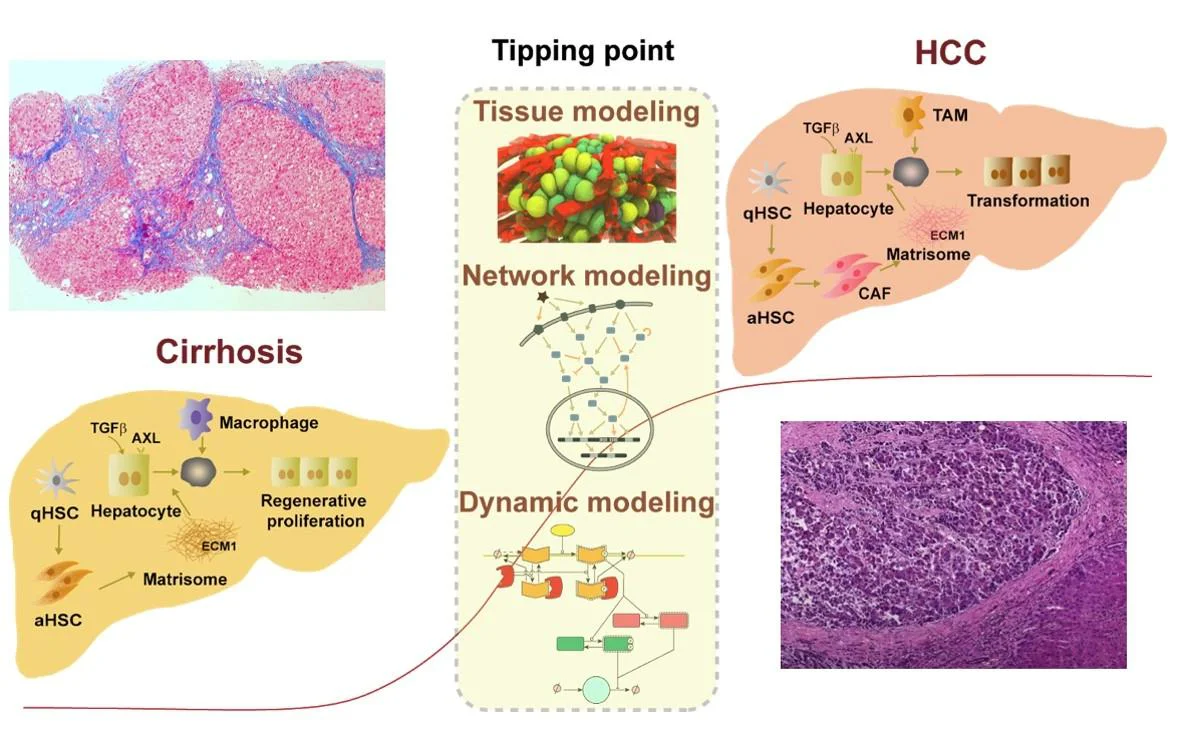C-TIP-HCC
Tipping-Point from Liver Cirrhosis to Hepatocellular Carcinoma
A total of 12 groups are working together to identify signatures from tissue and cell parameters in patients with non-alcoholic fatty liver disease and liver cirrhosis that are crucial for exceeding the tipping point (TIP) from liver cirrhosis to HCC via a non-invasive systems medicine approach.

The TIP is defined as the stage of cirrhosis of the liver, in which minor changes in cellular and tissue factors produce a micro-environment that promotes malignant transformation and cancer cell development. Critical tissues and cell parameters include structural changes in cirrhotic liver architecture, including changes in cellular phenotypes, especially hepatic stellate cells (HSC), macrophages, and hepatocytes, qualitative and quantitative changes in the matrisome, and changes in the TGFβ signaling pathway.
In addition, longitudinal clinical data from very large national and European patient cohorts are used, some of which have already been collected in LiSyM (previous project). Imaging, -omics, and dynamic signaling pathway data are used to further develop the already developed mathematical models on the tissue, cell and molecular scale, thus defining the patient-specific TIP in the cirrhotic regeneration node. Technically, a mechanistic spatially and temporally resolved multiscale model is developed, which is based on the tissue and cell parameters and can determine the specific risk of a single patient with cirrhosis passing the TIP for tumor development by model simulation. The model should be able to identify at-risk patients much earlier than is the case with current clinical used approaches that focus mainly on the early detection of already established HCC.
